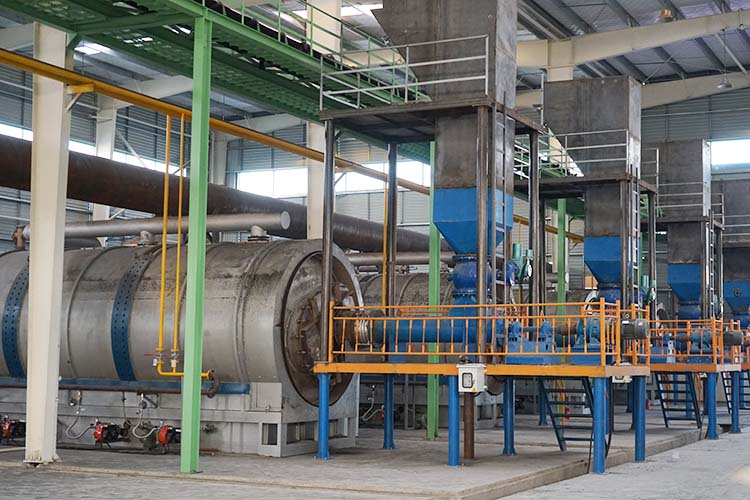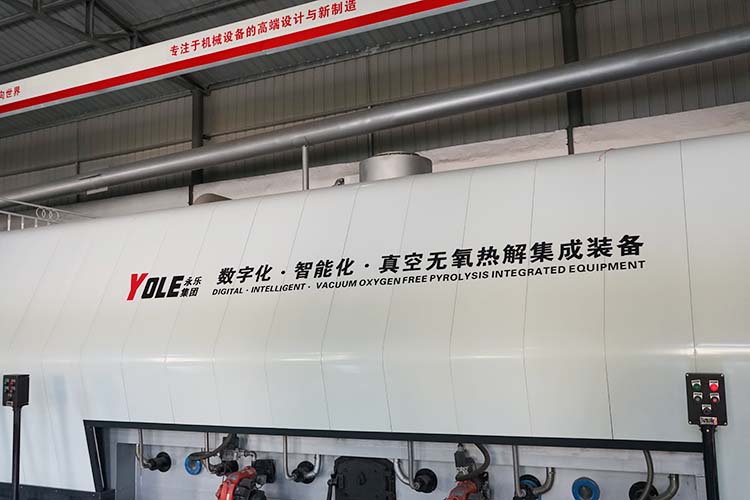With the acceleration of urbanization, the treatment of urban and rural household waste has become a difficult problem in environmental governance. The traditional treatment methods have problems such as secondary pollution and resource waste. The household waste treatment equipment produced by Yongle Group, the anaerobic low-temperature continuous pyrolysis process, has opened up a new path for household waste treatment with its efficient and environmentally friendly characteristics.

The core of household waste treatment equipment lies in utilizing anaerobic environment and low temperature conditions to break the limitations of traditional waste treatment. Under anaerobic conditions, household waste avoids the risk of harmful gases such as dioxins generated by high-temperature incineration, while low-temperature treatment effectively reduces energy consumption and achieves green treatment. Through continuous pyrolysis process, the organic components in household waste are fully decomposed and ultimately converted into three main products: inert solid carbon residue, pyrolysis fuel oil, and bio natural gas. While achieving harmless treatment, the recycling of resources is also completed.

In terms of product utilization, the treatment of inert solid carbon slag demonstrates strong resource recovery potential. After the sorting process, the metal substances contained therein are accurately separated and recovered, and then re entered into the industrial production cycle. The remaining carbon residue, with its excellent physical and chemical properties, can be widely used in fields such as building material addition and soil improvement, which not only solves the problem of solid waste disposal but also creates considerable economic benefits. Pyrolysis fuel oil has excellent quality and can be directly put into the market as an industrial fuel or used by manufacturers to meet internal energy needs. Bionatural gas undergoes dechlorination purification treatment and serves as a clean energy source to provide circulating heating energy for pyrolysis equipment. Through practical verification, its heating capacity can meet more than 60% of the equipment's own energy consumption, greatly reducing dependence on external energy and achieving a good cycle of energy utilization.
From the processing effect data, the household waste treatment equipment also performs well. After pyrolysis treatment, the quality reduction rate of household waste is over 50%, and the volume reduction rate exceeds 90%, significantly alleviating the spatial pressure of garbage disposal. In response to climate change, the carbon emissions per ton of household waste can be reduced by 0.4-0.7 tons, helping to achieve the "dual carbon" goal.

The household waste treatment equipment using the anaerobic low-temperature continuous pyrolysis process combines innovative technology with the concept of resource recycling, achieving multiple goals of stabilization and reduction on the basis of harmlessness and resource utilization. It provides a sustainable solution for urban and rural household waste treatment and injects new impetus into improving the ecological environment and promoting green development.
Yongle Environmental Protection is mainly engaged in the research and development, production and sales of complete sets of technical equipment for organic solid waste disposal and comprehensive utilization. Production and manufacturing, domestic waste treatment equipment, tire pyrolysis equipment, medical waste disposal equipment, hazardous waste disposal equipment, and achieve efficient and comprehensive utilization of resources through independently developed low-temperature anaerobic pyrolysis equipment technology solutions.
Tags:Green and Circular New Path for Household Waste Treatment Equipment,household waste treatment equipment,YONGLE GROUP
 Latest news
Latest news


























